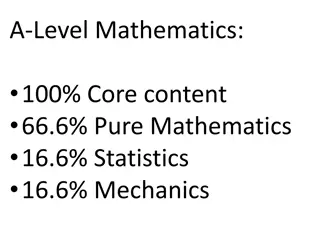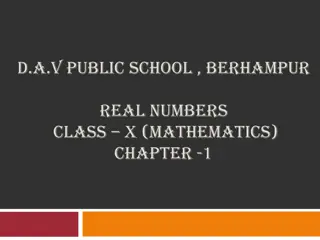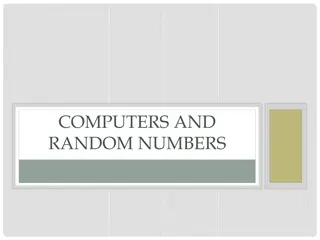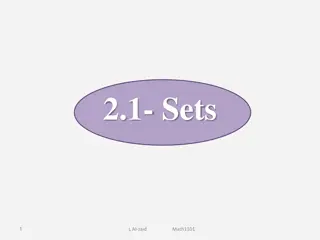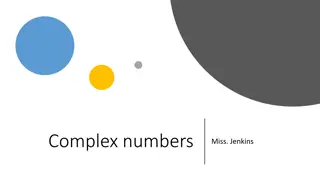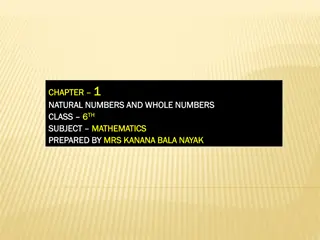Sets of Numbers in Mathematics
Sets of numbers in mathematics, such as natural, integers, rational, and real numbers, form the foundation of numerical concepts. This includes the real line representation, one-to-one correspondence, rational and irrational numbers, and more. Dive into the basics of number sets through illustrations and explanations to strengthen your mathematical knowledge.
Download Presentation

Please find below an Image/Link to download the presentation.
The content on the website is provided AS IS for your information and personal use only. It may not be sold, licensed, or shared on other websites without obtaining consent from the author.If you encounter any issues during the download, it is possible that the publisher has removed the file from their server.
You are allowed to download the files provided on this website for personal or commercial use, subject to the condition that they are used lawfully. All files are the property of their respective owners.
The content on the website is provided AS IS for your information and personal use only. It may not be sold, licensed, or shared on other websites without obtaining consent from the author.
E N D
Presentation Transcript
Calculas department of computer first year Chapter one Set of numbers
Sets of Numbers: There are sets of numbers that are used so often that they have special names and symbols:
Illustration Natural numbers are a subset of Integers Integers are a subset of Rational Numbers Rational Numbers are a subset of the Real Numbers Combinations of Real and Imaginary numbers make up the Complex Numbers. Real Numbers and the Real Line Real numbers can be represented by a coordinate system called the real line or x-axis. The real number corresponding to a point on the real line is the coordinate of the point.
The point on the real line corresponding to zero is the origin and is denoted by 0.The positive direction (to the right) is denoted by an arrowhead and is the direction of increasing values of x. Numbers to the right of the origin are positive. Numbers to the left of the origin are negative. The term nonnegative describes a number that is positive or zero. The term nonpositive describes a number that is negative or zero.
Each point on the real line corresponds to one and only one real number, and each real number corresponds to one and only one point on the real line. This type of relationship is called a one-to- one-correspondence. Each of the two points in above Figure corresponds to a rational number one that can be expressed as the ratio of two integers. (Note that 0.5=1/2 and -1.5=-3/2).Rational numbers can be represented either by terminating decimals such as or by repeating decimals such as 2/5=0.4 or by repeating decimals such as 1/3 =0.33333 =0.3
Real numbers that are not rational are irrational. Irrational numbers cannot be represented as terminating or repeating decimals. In computations, irrational numbers are represented by decimal approximations.
Order and Inequalities One important property of real numbers is that they can be ordered. If a and b are real numbers, a is less than b if b-a is positive. This order is denoted by the inequality a < b . The statement "b is greater than a" is equivalent to saying that a is less than b. When three real numbers a, b, and c are ordered such that a < b and b < c ,we say that b is between a and c and a < b < c. Geometrically, a < b if and only if a lies to the left of b on the real line. For example, 1 < 2 because 1 lies to the left of 2 on the real line.
The following properties are used in working with inequalities. Similar properties are obtained if < is replaced by and > is replaced by (The symbols and mean less than or equal to and greater than or equal to, respectively. Properties of Inequalities Let a, b, c, d, and k be real numbers. 1. If a < b and b < c , then a < c . 2. If a < b and c < d , then a + c < b+ d. 3. If a < b then a + k < b+k. 4. If a < b and k >0 then ak < bk constant 5. If a < b and k < 0, then ak > bk constant Transitive Property Add inequalities Add a constant Multiply by a positive Multiply by a negative






